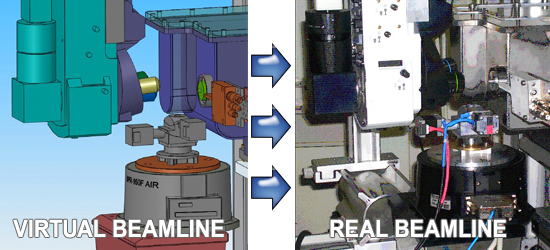- Home
- Users & Science
- Find a beamline
- X-ray nanoprobe
- ID13 - Microfocus Beamline
- Preparing for ID13 Beamtime
Preparing for ID13 Beamtime
This page serves as an information point for users with upcoming experimental time on the ID13 beamline. It provides important information, helping to ensure that scheduled experiments go as smoothly as possible. Please carefully read all of the points outlined below paying particular attention to the timescales given for each action. If there are any specific questions, please do not hesitate to discuss these with your local contact directly.
30+ days to go
One month before the start of the experiment, users should notify their local contact of any specialist equipment required (to be supplied by the ESRF). Certain items may have to be booked from equipment pools and it is therefore important that this is done as early as possible.
If users are bringing specialist apparatus for their experiments, (such as stretching cells), it is important to consider how to integrate these onto the beamline. The sample environment of ID13 is spatially confined, with precise dimensions depending upon beamline configuration. Apparatus weight limitations also need to be considered. If in any doubt, users should discuss these issues with their local contact well in advance of their beamtime. For example, it may be necessary to revise the design of bulky in-situ devices in order to accomodate very short focal-length optics. It is the users responsibility to ensure that all equipment to be mounted on the beamline is within the constraints of the sample environment and optics.
Consideration also needs to be given to securing the apparatus onto the beamline positioning stage. Any adaptation plates or apparatus modifications will need to be completed well before arrival on-site. Our ID13 technician has designed a complete 'virtual beamline', constructed in Solid Works. This can be used to virtually integrate experimental set-ups, prior to arrival. This information can be used to design mounting plates and ensure that the sample position is at the approximate height of the beam. Users bringing equipment for beamline integration should liase directly with the ID13 technician. Detailed plans should be provided (preferrably in Solid Works or AutoCAD format), for each piece of equipment to be mounted on the beamline.

7 days to go
With one week to go before the experiment, users should begin to consider how to extract the experimental data that will be generated. A typical experiment on ID13 will generate approximately 20-40 GB of data (although some can generate more than 100 GB). For users wishing to transfer data using SSH (similar to FTP) directly to/from their home institute, care should be taken that such transfers are technically possible before arrival. Firewalls frequently prohibit such connections, as do provider-imposed limits on data transfer. For users wishing to record experimental data onto CD's, DAT tapes or DVD's, ensure that you bring sufficient quantities of blank media with you. ID13 does NOT stock user media for data storage.
One of the most popular extraction methods is using portable storage devices, such as hard disks. ID13 is equipped with a number of USB2.0 and Firewire enabled PC's for the connection of such peripherals. Irrespective of the chosen data extraction method, users should bear in mind that all experimental data will be erased (from the on-site server) 30 days after creation.
Another important step to undertake prior to arrival is checking that any user-provided equipment is in full working order. It is always advisable to bring back-up equipment if possible. Experimental time wasted due to such equipment failure cannot be reimbursed. It is also worth spending some minutes reading the ID13 beamline handbook available on the ID13 web pages. This will ensure that users are familiar with the ID13 beamline environment prior to arrival.
Upon arrival
Users arriving earlier than their experimental start date/time should consult with their local contact concerning the schedule. There is plenty of space around the beamline for setting up equipment before the official experimental time begins, however this should only be undertaken after consultation with beamlime staff.
Prior to departure
Prior to departure, please ensure that all areas of the beamline are tidy and that any waste has been disposed of according to correct procedures. Any adaptation plates provided by the beamline should be returned to the ID13 technician or the local contact. Particular attention should be given to noting any important information/parameters before leaving. It is not always possible to provide missing experimental details after several months have elapsed (i.e. detector positions, wavelengths etc..). Users wishing to record SPEC session log files and microscope images should also ensure that this is complete before departure.
Before leaving the ESRF site, please consider experimental data storage and transfer. If data needs to be copied onto CD's, DVD's, DAT tapes or hard disks, be sure to leave sufficient time to complete these operations (which can take several hours). If the data is being transferred directly from off-site (using SSH), please don't forget to do this as soon as possible. All experimental data will be deleted after 30 days.



